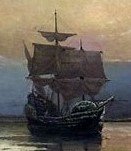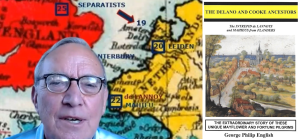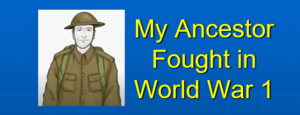This talk was given by George English of Research Through People to the Rotary Club of Greenford on 22 October 2020.
A full recording of the Mayflower Zoom presentation has been kindly provided for this blog.
This year is the 400th Anniversary of 102 passengers setting sail from Plymouth to the New World on the Mayflower in 1620. They left their homeland seeking religious freedom. The voyage that made a nation had a dramatic impact, not only on what would become the United States of America, but also on Western civilisation right up to the present day.

The New World and the Reformation
Two events around the turn of the 16th century led to an astonishing series of happenings that caused the sailing of the Mayflower more than 100 years later.
In 1492, Columbus discovered America for the Spanish. The attempts at colonisation of north America by various countries that followed would make New England a possible place for the Pilgrims to emigrate to.
Then, in 1517, Martin Luther nailed 95 theses to the church door in the German town of Wittenberg, protesting about many Catholic practices. The ideas of Luther and John Calvin started the Reformation which would lead to many religious, social and other changes in England, Scotland and elsewhere.
England’s route to Protestantism was different from what happened in the rest of Europe. Between 1533 and 1563, she went from Catholic to Protestant back to Catholic and again back to Protestant.
Henry VIII’s reason for leaving the Catholic fold was because he wanted to divorce his wife, Catherine of Aragon, which the Pope would not let him do. When Charles V of Spain began persecuting Protestants in the Spanish Netherlands, Henry allowed the refugees to settle in England. In 1547, Henry VIII was succeeded by his son Edward VI.
But in 1553, Mary became Queen. Her execution of Protestants led to her sobriquet “Bloody Mary”. Mary died in 1558, to be followed by Queen Elizabeth. She tried to follow a ‘middle way’ which promoted Protestantism but with forms of worship which would allow Catholics to compromise.
During Elizabeth’s reign, a Puritan sect known as the Separatists wanted to leave the established Church of England. Their beliefs were more in tune with those of the Presbyterian Church of Scotland. Many of the Pilgrims who would sail on the Mayflower (‘Saints’) came from Scrooby and Gainsborough in the English Midlands. The Separatists held secret meetings to worship but such meetings were banned in 1604 by King James.
In 1608, the Separatists fled to Amsterdam in Holland, then on to Leiden in 1609. John Robinson was their pastor. But the group suffered hardship in a strange land where their children were becoming more Dutch than English. Also, a war between Holland and Spain loomed.
The Mayflower’s Voyage and Effect on Western Civilisation
So, the decision was made to go to New England in 1620. The venture was financed by a group of Merchant ‘Adventurers’ in the hope of quick profits. The Separatists (‘Saints’) left on the Speedwell to rendezvous with the Mayflower in Southampton. The Mayflower departed from London with many non-religious passengers (‘Strangers’). But the Speedwell was “open and leaky as a sieve” and, after putting in to both Dartmouth and Plymouth for repairs, the Speedwell and some of the Pilgrims were left behind at Plymouth.

The delays meant that the Mayflower did not finally leave Plymouth until 16 September 1620. The ship was designed to carry cargo, not passengers. It was battered by storms; and seasickness was rife among the passengers. ‘The Voyage that Made a Nation’ took 66 days until land was sighted on 9 November off Cape Cod, 200 miles north of where they had given permission to set up a colony.
The first year for the Pilgrims was tough. The people native to the region were the Wampanoag. In comparison to COVID-19, they had had the ‘Great Dying’ plague from 1616-19. The Wampanoag were crucial in the survival and progress of the Pilgrims. Though suspicious of each other, in March 1621, a Treaty was agreed between them, with an exchange of skills.
Disease and death stalked the Pilgrims due to scurvy and a lack of adequate shelter. More than half of them died in the first year in New England. In autumn, the settlers held a Thanksgiving for the good harvest after crops were planted in Spring, and their survival. With 90 native Americans, they feasted for 3 days on corn, venison & fowl.
Gradually, the first successful colonisation of America began to take shape. The Great Migration began of thousands of immigrants from Britain and elsewhere, many attracted by the religious freedom. Over the next 4 centuries, the process begun by the passengers on the Mayflower would have a profound effect on Western civilisation.
51 passengers on the Mayflower are known to have living descendants. There are estimated to be 35 million Mayflower descendants in the world. The Mayflower links four nations, spans 400 years of history and connects millions of people.
The General Society of Mayflower Descendants website provides an excellent resource of information.
Can We Help You Find Out About Your Ancestors?
If you’ve got a Mayflower connection in your family tree, and would like to know more, please get in touch with us to book your free consultation. For Mayflower 400, we’ve currently got a 10% introductory discount – just quote ‘Mayflower400’.





